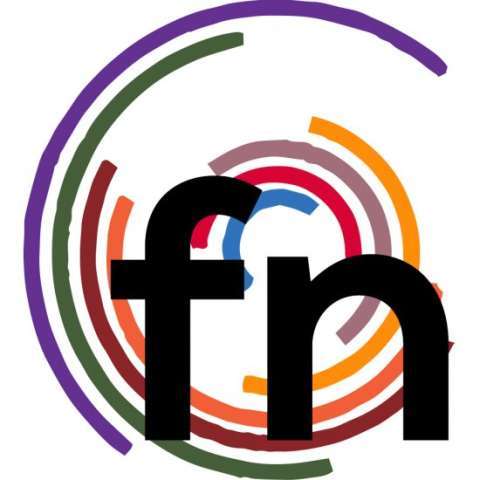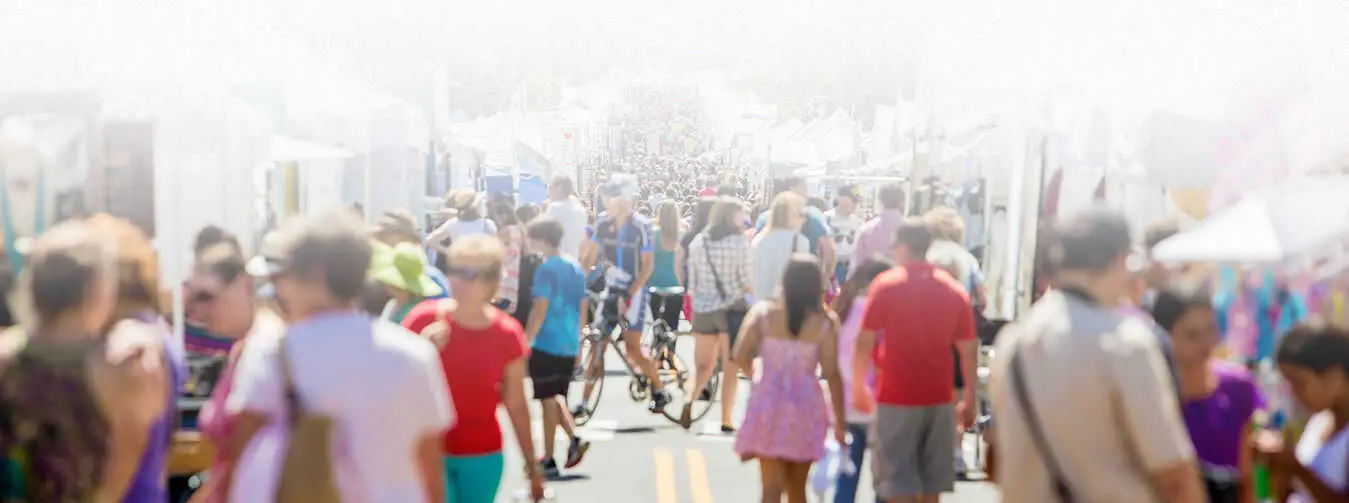Showcasing your work at art festivals, craft shows, or any other event is a great opportunity to gain exposure. So, the more you can do to make your booth customer-friendly, the greater chance you have of selling your work and gaining new potential customers. Here are a few tips that have worked well for me:
1. Label your pieces clearly
The first two questions customers tend to ask when viewing your work often involve medium and price.
Putting labels on each piece that state the title, size, medium and price will answer those questions before you even have a conversation with your customer, letting them quickly decide if they're interested in knowing more about your technique or purchasing your work. Remember, your booth is functioning partly as a store—you probably don't like to ask what everything costs when you go shopping, and neither do your customers.
2. Provide space to "take in" your work
Art collectors know that paintings look best when viewed from 5-10 feet back, so give your viewers room to walk around, take in each piece, and then stand back and look at it. Also, try to make sure there is "breathing room" between your pieces—loading up your booth with too much art makes it difficult for some visitors to focus on individual paintings. When a visitor to my booth takes the time to step back and view a piece from a few angles, I know there's a chance they're imagining the piece in their home—this is one of the first steps to a possible purchase.
3. Limit personal visitors and be approachable
I've never made a sale while I had personal visitors in my booth. It's great to have friends and family stop by, but it can be intimidating for potential buyers to walk into your booth and see a group of people having a good time together—like walking into a party where everyone knows each other but you.
There's also the issue of space—people visiting are taking up room, so share a quick few minutes with family or friends, then send them off with a hug so you can get back to work.
If you've got a helper, take turns being alone in the booth. If you and your helper are working together, be sure to greet visitors as they walk in and then physically separate yourself from your partner. Of course, make sure you identify yourself as the artist, so the customer feels comfortable approaching you with questions or conversation.
4. Allow viewers the chance to pick something up
This may sound like a scary proposition, and it won't work if you've only got large pieces that shouldn't be handled. . . but if possible, set out a table of small pieces that visitors can connect with through touch. This will give them a small taste of ownership.
Of course, if a customer expresses interest in a piece that's hanging up, it doesn't hurt to take the piece down and let that person hold it for a moment (provided you feel comfortable doing so).
Fairs and festivals are the perfect opportunities not only for customers to see your artwork in person, but also a greater chance for them to connect with you (the artist) and your art. This will then allow you to stay connected with your customers after you leave a lasting impression! Allowing them to take a close look at your art just makes you one step closer to gaining a loyal customer and making the art festival a huge success for your business.
5. Be intuitive with suggestions and information
If someone shows interest in a piece, offer a few details about it—how you created it, what inspired it, or how other viewers have reacted to it. If someone mentions they're from out of town, mention your shipping services or offer to package it up for the trip home.
Whenever possible, provide a display that details your technique so customers feel knowledgeable about you as an artist. Also, make sure to display your acceptable payment methods and mention them if the subject of payment comes up. If the buyer wants to continue to shop after purchasing, offer to hold the purchased items until they're ready to leave.
. . . and here are a few "dont's" as well
One thing you can always count on at a great festival is the food vendors serving delicious food. However, if you can help it, don't eat in front of customers —it makes things awkward. And no matter how rough a day you're having, refrain from complaining about your day.
Handle criticism graciously. Yes, it's irritating when people are rude in your booth, but being unpleasant back will make your booth uncomfortable, and that's the last thing artists want. Instead, take the high road and stroll out of your booth along with those annoying visitors (don't worry—they'll follow you) getting all the bad energy out of the booth. Good luck at your next art fair or exhibit!
From our Newsletter Archives, by Niki Hilsabeck.
https://emptyeasel.com/



